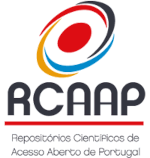Conflicts of Interest Policy
According to the International Committee of Medical Journal Editors uniform declaration of competing interests (Conflicting Interest), authors should disclose four types of information:
-
Their associations with commercial entities that provided support for the work reported in the submitted manuscript (the time frame for disclosure in this section of the form is the lifespan of the work being reported).
-
Their associations with commercial entities that could be viewed as having an interest in the general area of the submitted manuscript (the time frame for disclosure in this section is the 36 months before submission of the manuscript).
-
Any similar financial associations involving their spouse or their children under 18 years of age.
-
Non-financial associations that may be relevant to the submitted manuscript.
Athena Health & research Journal (AHRJ) Conflict of Interest Policy
AHRJ believes that to make the best decision on how to deal with a manuscript the journal editor should know about any conflict of interest that authors may have. We are not aiming to eradicate competing interests as they are almost inevitable. We will not reject papers simply because authors have a competing interest, but these will be declared on the published paper.
A competing interest exists when professional judgment concerning a primary interest (such as patients’ welfare or the validity of research) may be influenced by a secondary interest (such as financial gain or personal relationship). Perceptions of conflict of interest are as important as actual conflicts of interest. There is nothing inherently unethical about a competing interest but it should be acknowledged and openly stated.
Examples of competing interests include the following: board membership, consultancy, employment, expert testimony grants (including pending), contract research, lectures/other education events, speakers’ bureau, patents (planned, pending or issued), receipt of equipment or supplies, royalties, stock/stock options/other forms of ownership, additional expenses not included in COIs already specified, other personal or professional relationships that may influence or appear to influence.
At the end of the paper authors should include a section stating any existing conflict of interest. In the absence of Conflict of interests this section should read “All authors declare no conflict of interest, financial or non-financial, to disclose”.








